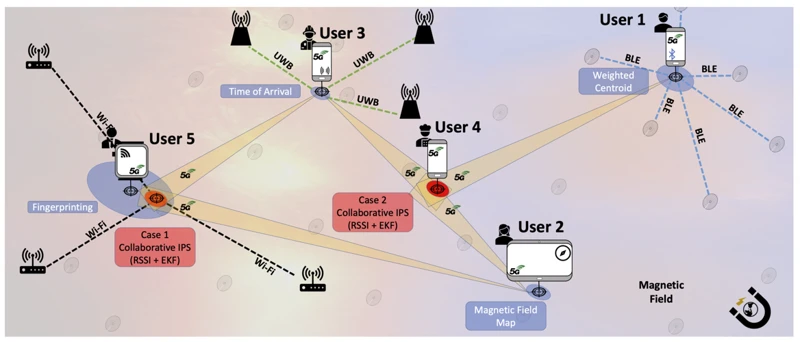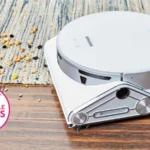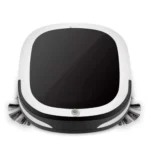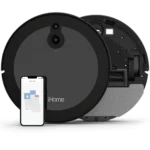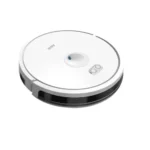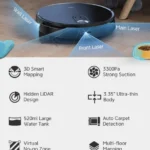Picture this – you’re walking around your house, trying to plan the cleaning schedule for the week when you spot a dust bunny lurking in a corner. It is frustrating when you’re short on time and have to repeatedly clean different spots rather than handling it all in one go. What if there was a solution that could make the whole cleaning process more efficient? Enter smart sensors. With the advent of smart sensors, indoor mapping and cleaning have become more accurate and streamlined than ever before. In this article, we’ll dive into the world of smart sensors, their role in indoor mapping, and how they help create smart vacuum cleaners that can efficiently clean your home.
What are Smart Sensors?
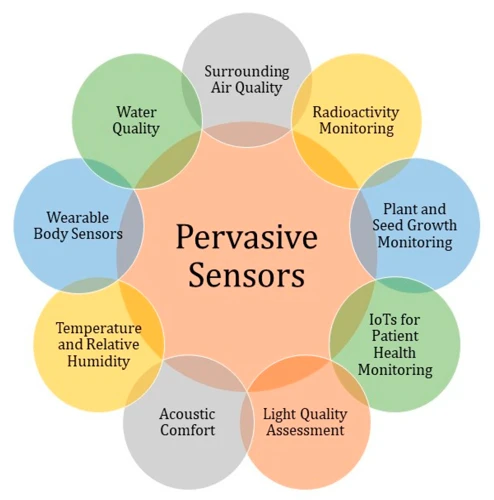
It’s remarkable how far technology has come, especially when it comes to home appliances. Today, we have access to innovative devices that can help us with daily chores, making mundane tasks much more comfortable and convenient. One such example is smart vacuum cleaners. These devices work by using smart sensors to navigate, avoid obstacles, and improve cleaning efficiency. But what are smart sensors, and how do they help in cleaning? Let’s dive deeper to find out. To learn more about how smart sensors contribute to cleaning efficiency, check out our article on smart sensors and cleaning efficiency.
Types of Smart Sensors
Smart sensors are an integral part of smart vacuum cleaners as they help to improve the efficiency and effectiveness of cleaning the indoor environment. There are different types of sensors that work together to create an accurate indoor map and navigate the cleaner around obstacles. Let’s take a closer look at some of the most common types of smart sensors used in these devices:
| Type of Sensor | Function |
|---|---|
| Optical sensors | These sensors use light to detect the presence of obstacles and map the surrounding environment. |
| Infrared sensors | These sensors detect the distance of objects and help the cleaner maneuver around tight spaces. |
| Accelerometers and Gyroscopes | These sensors work together to detect the orientation and rotation of the cleaner to improve navigation and prevent falls. |
| Bumper sensors | These sensors are located around the cleaner and detect physical contact with obstacles, helping to steer the cleaner around them. |
| Cliff sensors | These sensors detect changes in floor height, such as stairs or drop-offs, and prevent the cleaner from falling off. |
Each of these types of sensors serves a specific function in helping the cleaner navigate and clean your home efficiently. By utilizing these sensors, smart vacuum cleaners can create an accurate map of the indoor environment and avoid obstacles, resulting in faster cleaning cycles and longer battery life. To learn more about how these sensors improve efficiency, check out our article on smart sensors and obstacle detection, or read about types of sensors used in smart vacuums. In the future, we can expect to see improvements in sensor technology, such as noise-reducing sensors and carpet detection sensors, which will further improve cleaning performance.
Indoor Mapping and Smart Sensors
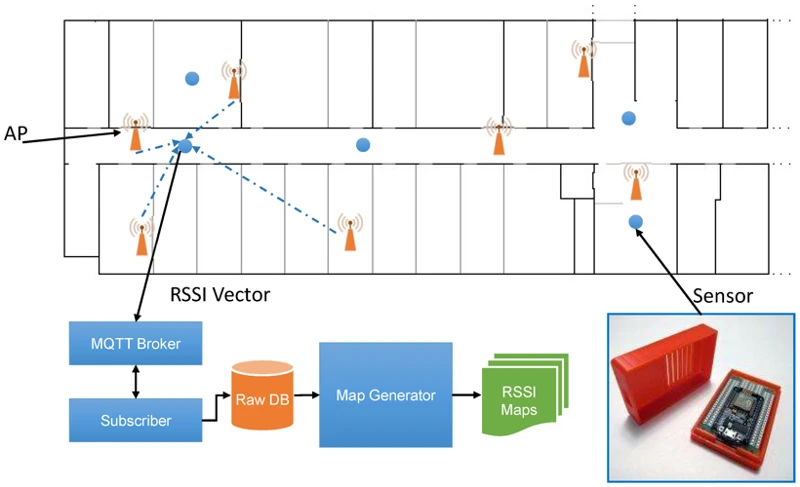
Indoor mapping has become increasingly important for smart vacuum cleaners, and the use of smart sensors is crucial in creating accurate and detailed maps of indoor spaces. With the advancement of technology, smart sensors have become more sophisticated and versatile, allowing vacuum cleaners to move around a room with greater efficiency and accuracy. In this section, we will explore the key role that smart sensors play in indoor mapping, and how they help improve the cleaning efficiency of smart vacuum cleaners. To learn more about the different types of smart sensors used in smart vacuum cleaners, check out our previous article on types of smart sensors.
How Smart Sensors Help Create Maps
Smart sensors play a vital role in creating indoor maps for smart vacuum cleaners. The following are the ways through which smart sensors help in creating high-precision maps:
- Laser Sensors: Laser sensors are one of the most important types of smart sensors that are used in indoor mapping. These sensors emit laser beams and analyze the reflection pattern to create a highly accurate map of the surrounding area. The laser sensors can even distinguish between various materials, which helps in identifying the type of surface and the obstacles on it.
- Infrared Sensors: Infrared sensors are also used in creating indoor maps. These sensors emit infrared rays that bounce back when they hit an object. The sensors can measure the time taken for the rays to return and accurately calculate the distance of the object. This helps in creating a map of the area with obstacles and the free spaces between them.
- Bump Sensors: Bump sensors are small sensors that are placed on the outer body of the smart vacuum cleaner. These sensors detect when the vacuum cleaner comes in contact with an object, and they send a signal to the vacuum cleaner to stop or change direction. These signals help create a map of the objects in the area.
These smart sensors work together to create an accurate map of the surrounding area, including the objects and the obstacles in the room. The map is created in real-time, and the smart vacuum cleaner uses this map to navigate through the area without colliding with any obstacles. The accuracy of these maps is essential for ensuring that the smart vacuum cleaner can clean the room efficiently while avoiding all obstacles.
Smart sensors are essential for creating high-precision indoor maps for smart vacuum cleaners. Laser sensors, infrared sensors, and bump sensors all contribute to creating an accurate map and ensuring that the smart vacuum cleaner can clean the room efficiently.
Benefits of Accurate Indoor Maps
Having accurate indoor maps is crucial for smart vacuum cleaners. These maps provide a detailed layout of the area they need to clean. This, in turn, helps the smart vacuum cleaner to function more efficiently and effectively. Here are some of the benefits of using accurate indoor maps:
- Efficient Cleaning: With accurate indoor maps, the vacuum cleaner can determine which areas need to be cleaned and which ones it has already covered. This eliminates the need for the vacuum cleaner to go over the same area multiple times, saving time and energy.
- Time-Saving: Accurate indoor maps save time for both the vacuum cleaner and the user. By understanding the layout of the space, the vacuum cleaner can navigate through the area smoothly and finish the cleaning cycle quickly. This saves the user time as they don’t need to supervise or micromanage the cleaner.
- Thorough Cleaning: With an accurate indoor map, the vacuum cleaner can access all the nooks and crannies of the space, ensuring a thorough cleaning cycle. This is especially important for places that are hard to reach, such as corners, under furniture, or small spaces.
- Easy Navigation: Indoor maps help vacuum cleaners to navigate through the space seamlessly. This, in turn, reduces the risk of the vacuum cleaner getting stuck in tight spaces or damaging objects in the room.
Having accurate indoor maps is vital for smart vacuum cleaners—allowing them to clean more efficiently and effectively, saving time and energy.
How Smart Sensors Improve Efficiency
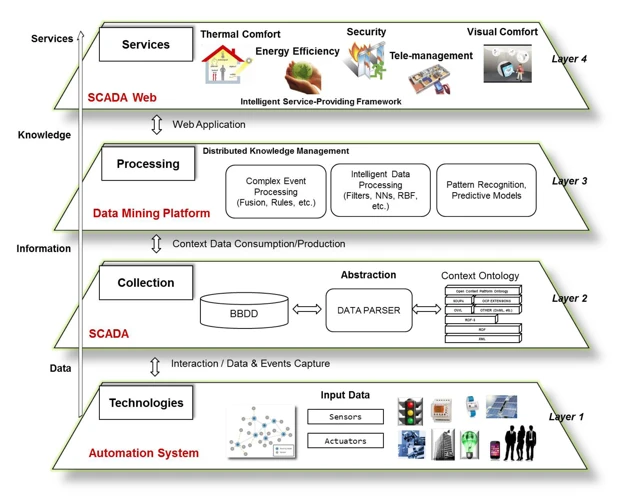
As we delve deeper into the topic of smart sensors and their role in indoor mapping for smart vacuum cleaners, we cannot overlook their immense contribution towards improving the efficiency of these devices. When equipped with advanced sensors, smart vacuum cleaners become more than just robotic cleaners, transforming into autonomous cleaning machines that can navigate through complex indoor spaces with ease. The use of smart sensors enables these cleaners to efficiently detect obstacles, avoid collision, and navigate through restricted areas, resulting in faster and more thorough cleaning cycles. But how exactly do smart sensors elevate the performance of smart vacuum cleaners? Let’s find out.
Navigations and Obstacle Avoidance
Smart sensors play a crucial role in the navigation and obstacle avoidance of smart vacuum cleaners. These sensors allow the device to move around furniture and other household objects without bumping into them. Here are some ways how smart sensors improve the navigation and obstacle avoidance of smart vacuum cleaners:
1) Laser sensors: These sensors scan the surrounding space to map out a room and the objects in it. As the device moves around, it updates its map in real-time, ensuring that it has an accurate layout of the area it is cleaning.
2) Infrared sensors: These sensors detect obstacles and allow smart vacuum cleaners to avoid them. They emit an infrared light and measure the time it takes for the light to bounce back. If the light bounces back too quickly, it indicates there is an object in front of the device that needs to be avoided.
3) Bumper sensors: These sensors are located on the front of the smart vacuum cleaner and detect any physical contact with an object. Once detected, the sensors instruct the device to back up and adjust its route, so it does not damage the furniture or other objects.
All of these sensors work together to improve the navigation and obstacle avoidance of smart vacuum cleaners. By having an accurate map of the room and the objects in it, the device can plan its route more efficiently and avoid obstacles. This not only saves time but also helps prevent damage to household objects.
However, there are some limitations to the sensors, such as detecting transparent or shiny surfaces. Future developments may include the use of AI and machine learning to improve the sensors’ accuracy and response time, making the cleaning process even more efficient.
Faster Cleaning Cycles
Smart sensors play a crucial role in making smart vacuum cleaners more efficient, resulting in faster cleaning cycles. Here are some ways in which smart sensors contribute to quicker cleaning:
- Efficient Mapping: Smart sensors enable accurate mapping and navigation, helping the vacuum cleaner cover more area in less time. With precise mapping, the smart vacuum cleaner can plan its optimal cleaning path, avoiding unnecessary passes, and covering the area faster. This results in a shorter cleaning cycle, which is much more efficient and time-saving.
- Obstacle Detection: Smart sensors detect and avoid obstacles, such as furniture, toys or other objects lying on the floor, helping the smart vacuum cleaner move freely without any interruptions. This also means that the vacuum cleaner doesn’t waste time bumping into objects, thereby enhancing the efficiency of the cleaning cycle.
- Increased Suction Power: Smart sensors can detect the presence of larger debris or dirt, and modulate suction power accordingly, resulting in faster cleaning cycles. With the help of sensors, the vacuum cleaner can determine the amount of dirt and debris present, and adjust the suction power accordingly in real-time, consuming less time than manual configurations.
Faster cleaning cycles not only save time but also requires lower resources, making smart vacuum cleaners energy-efficient. With smart sensors, the vacuum cleaner can cover more area, avoid obstacles, and adjust suction power in real-time to get the job done quickly and efficiently. As a result, you can get your cleaning done in less time and enjoy a cleaner home without much effort.
Improved Battery Life
One of the most significant benefits of Smart Sensors in smart vacuum cleaners is improved battery life. This is possible because of the increased efficiency that these sensors bring to the device’s cleaning process.
The Smart Sensors utilized in these vacuum cleaners help the device by mapping the area to identify the layout and obstructions in its area of operation. This enables the vacuum cleaner to follow optimized paths and avoid retracing its path, which saves battery life. The smart sensors can also detect when the floor is clean and when the device has finished cleaning, allowing the vacuum cleaner to stop its cleaning cycle automatically, preventing unnecessary battery discharge.
The Smart Sensors can detect when the battery charge is running low, which triggers the vacuum cleaner to return to its charging station to recharge. This prevents the device from running out of battery during a cleaning cycle, resulting in incomplete cleaning and additional battery use.
All these functions of the Smart Sensors mean that the vacuum cleaner uses energy more efficiently, which translates to improved battery life. Vacuum cleaners with Smart Sensors can clean larger spaces on a single charge than a standard device. This feature is desirable for busy individuals who want their devices to run for as long as possible without needing recharging.
Below, you can see a table summarizing the benefits of the Smart Sensors on battery life:
| Benefits of Smart Sensors on Battery Life |
|---|
| Saves battery life by avoiding retracing its path |
| Automatically stops cleaning cycle, preventing unnecessary battery discharge |
| Can detect when the battery is low, triggering the device to return to its charging station to recharge |
| Cleans larger spaces on a single charge than standard devices |
Improved battery life is a highly desirable feature of Smart Sensors in smart vacuum cleaners. With this functionality, users can enjoy longer cleaning cycles, making household chores more convenient and efficient.
Smart Sensor Limitations and Future Developments
As with any emerging technology, smart sensors have their limitations. While they have greatly improved the efficiency of smart vacuum cleaners, there is still room for growth and development.
One limitation of current smart sensors is their inability to accurately detect transparent or reflective surfaces, such as glass or mirrors. Sensors can be prone to interference from other electronic devices, which can cause inaccuracies in mapping and navigation.
To overcome these limitations, researchers are exploring the use of LiDAR technology, which uses lasers to map the environment in three dimensions. LiDAR systems are capable of detecting even the most challenging surfaces, and can provide more precise and accurate data for mapping and navigation.
Another area of future development for smart sensors is in their ability to communicate and interact with other connected devices in the home. With the rise of the Internet of Things (IoT), smart sensors can potentially share data with other devices to improve overall home automation and efficiency.
Advancements in machine learning and artificial intelligence can help smart sensors to learn and adapt to different environments and situations, improving their ability to navigate and clean efficiently.
It is clear that smart sensors have made a significant impact on the home cleaning industry, but as technology continues to evolve, we can expect further improvements and new developments in this exciting field.
Conclusion
In conclusion, it’s clear that smart sensors have revolutionized the way we approach indoor mapping for smart vacuum cleaners. The ability of smart sensors to gather and process data has made it possible for smart vacuum cleaners to navigate, avoid obstacles, and clean floors more effectively than ever before.
By analyzing the data collected by smart sensors, these devices can create accurate indoor maps that help to improve efficiency, reduce battery consumption, and provide a better cleaning experience for users. Additionally, smart sensors are capable of detecting and avoiding obstacles, which reduces the risk of the device getting stuck or causing damage to furniture.
Despite the benefits of smart sensors, however, there are still limitations that need to be addressed. For example, smart sensors may struggle to detect certain types of surfaces or navigate complex areas. To overcome these limitations, researchers are constantly exploring new technologies and developing more advanced sensors.
Overall, it’s clear that smart sensors have a crucial role to play in the future of smart vacuum cleaners. As new technologies continue to emerge, we can expect to see even more advanced sensors that can help to create even more accurate indoor maps and improve the overall cleaning experience for users. In the end, it’s safe to say that smart sensors will continue to be a major driving force behind the ongoing evolution of the smart vacuum cleaner industry.
Frequently Asked Questions
1. How do smart sensors differ from traditional sensors?
Smart sensors have the ability to process data and make decisions based on that data, while traditional sensors simply collect and transmit data.
2. What are the different types of smart sensors used in indoor mapping?
Smart sensors used in indoor mapping include LiDAR sensors, RGB-D sensors, and 2D cameras.
3. How do smart sensors help create accurate indoor maps?
Smart sensors use a combination of depth sensing, 3D mapping, and simultaneous localization and mapping (SLAM) algorithms to create accurate indoor maps.
4. What are the benefits of having accurate indoor maps for smart vacuum cleaners?
Accurate indoor maps allow smart vacuum cleaners to navigate more efficiently, avoid obstacles, and clean areas more thoroughly.
5. How do smart sensors improve efficiency in smart vacuum cleaners?
Smart sensors in smart vacuum cleaners improve efficiency by enabling better navigation, obstacle avoidance, and faster cleaning cycles.
6. Can smart vacuum cleaners with smart sensors clean entire homes without human intervention?
Yes, smart vacuum cleaners with smart sensors can clean entire homes without human intervention, as long as they have access to all areas of the home.
7. Are there any limitations to smart sensors in smart vacuum cleaners?
Some limitations of smart sensors in smart vacuum cleaners include difficulty sensing certain materials and objects, and occasionally getting stuck in tight spaces or corners.
8. Will smart sensors continue to evolve and improve over time?
Yes, as technology continues to advance, smart sensors are expected to become even more accurate and efficient over time.
9. How do smart sensors contribute to the trend of smart homes?
Smart sensors are a key component of smart home technology, as they enable devices like smart vacuum cleaners to function autonomously and make decisions based on environmental data.
10. Are there any safety concerns with using smart vacuum cleaners with smart sensors?
While there are no significant safety concerns associated with using smart vacuum cleaners with smart sensors, it’s always important to follow manufacturer instructions and use common sense when using any appliance in the home.
